Abstract
The clearance kinetics, specific hepatic uptake and specific splenic uptake of immune complexes were examined in control mice and in mice treated with large doses of purified cobra venom factor (CoF) to deplete serum C3. At least 90% depletion of C3 was achieved as tested by double diffusion with antiserum specific to antigenic determinants on C3. A saturating dose of preformed immune complexes, consisting of HSA and rabbit antibodies to HSA, was used in these experiments. No differences in clearance kinetics and organ uptake of the immune complexes containing IgG as antibodies were observed between the two groups of mice. Within the limits of the experimental system no evidence was obtained for the participation of serum C3 and C3b receptors on Kupffer cells in the hepatic uptake of circulating immune complexes. The apparent discrepancies on the role of C3 and C3b receptors between these experiments and the in vitro studies on the uptake of immune complexes by macrophages is most likely related to the differences in the lattice of immune complexes employed by investigators.
Full text
PDF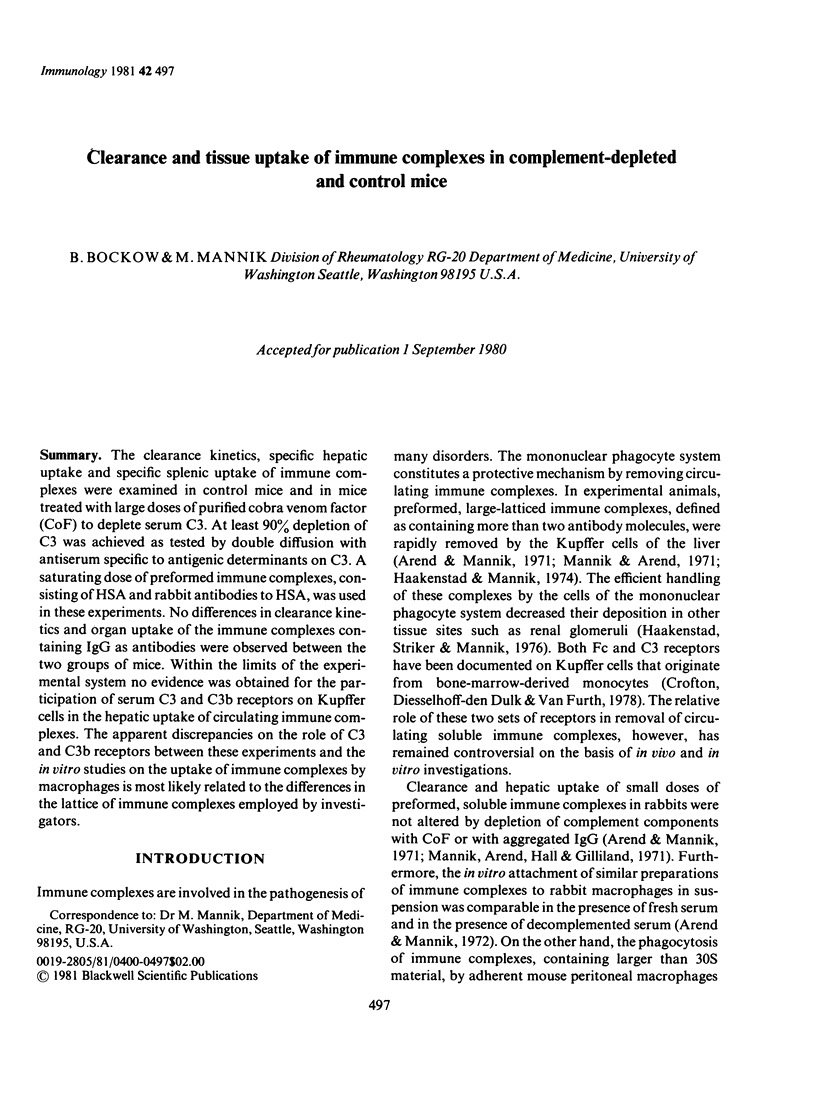
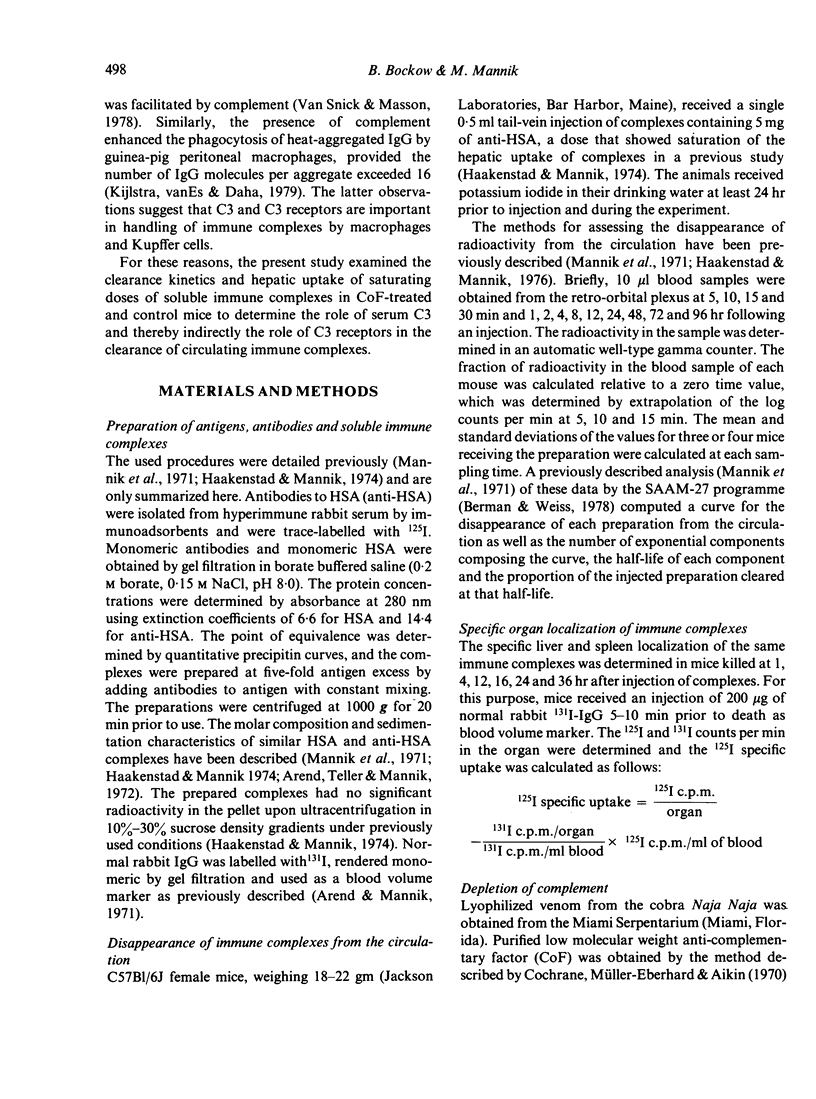

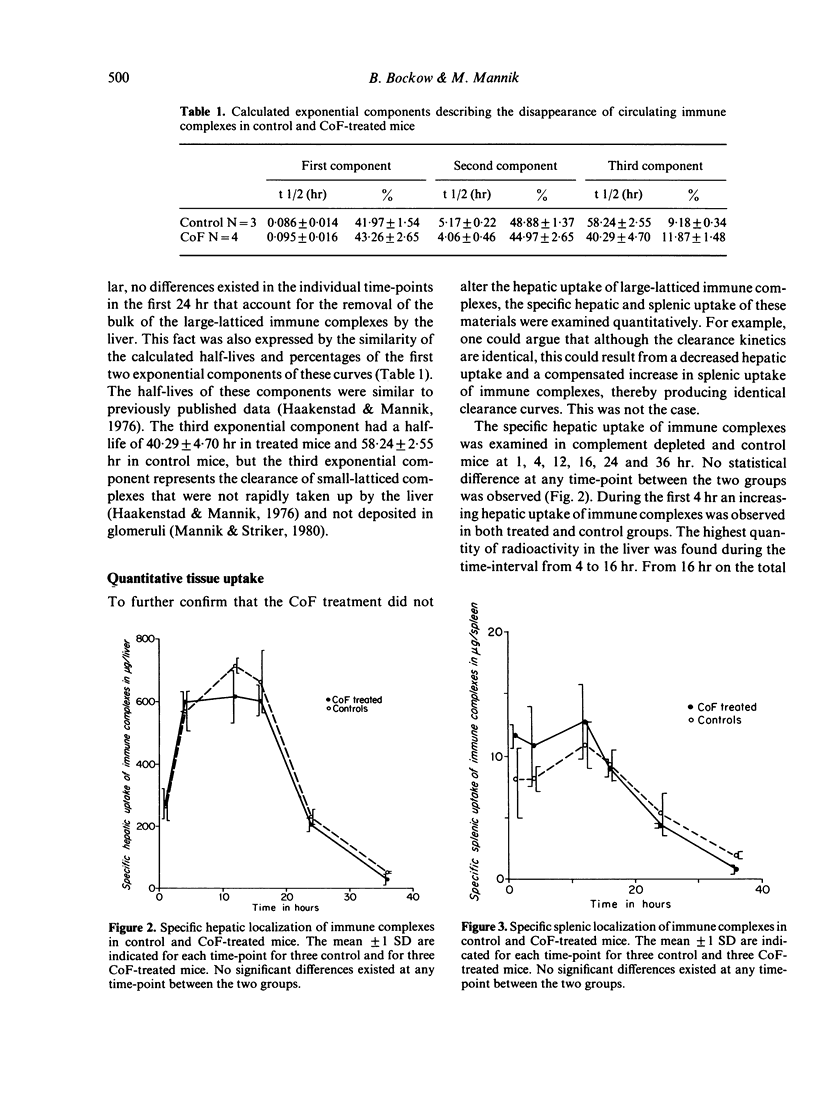
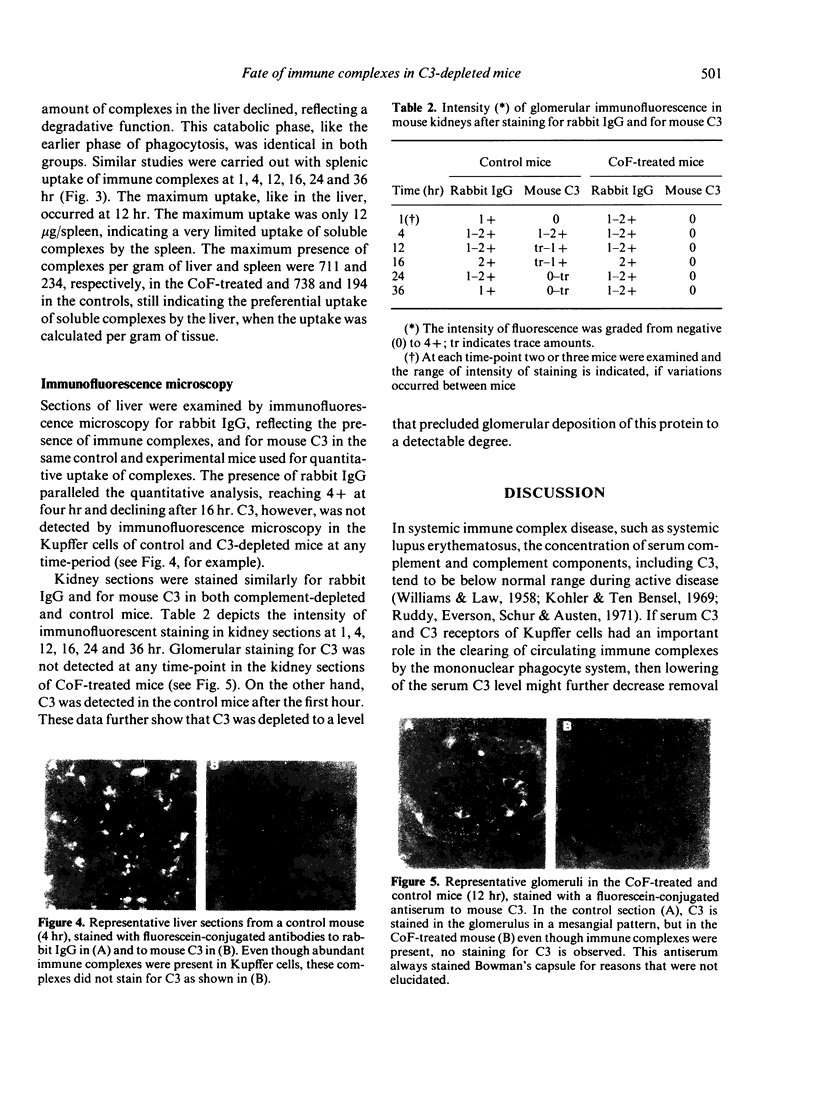
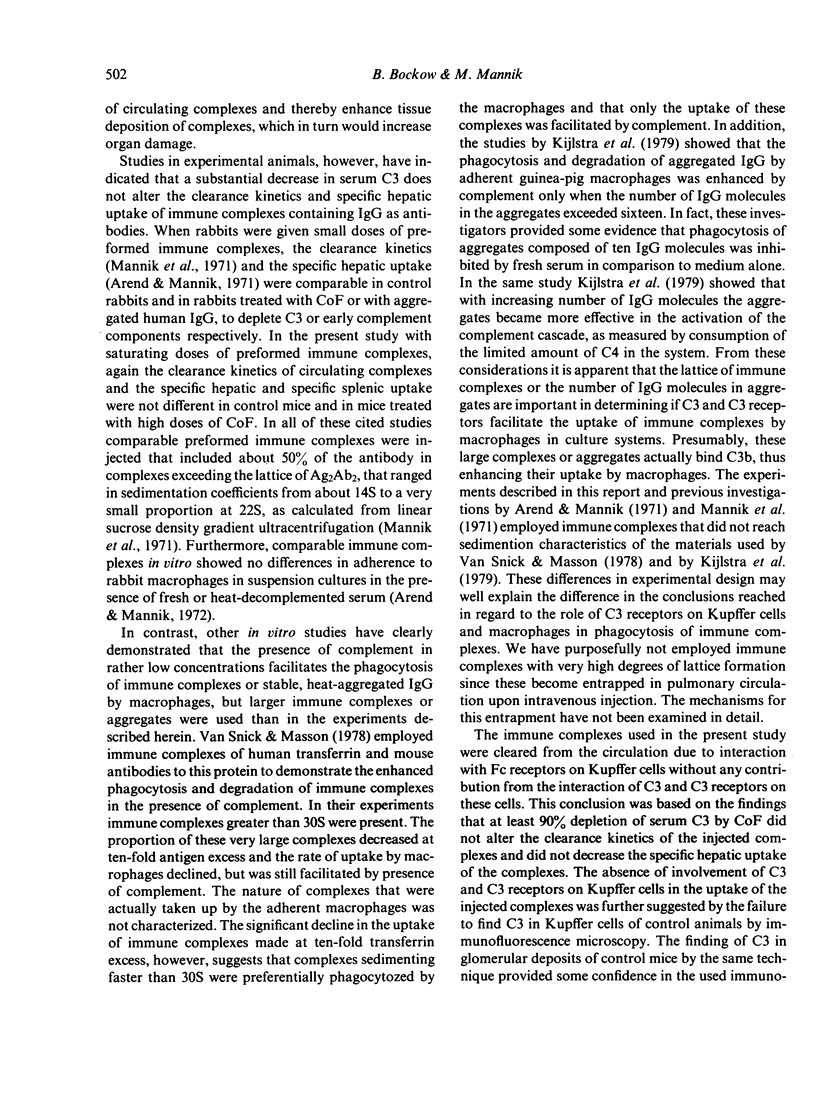
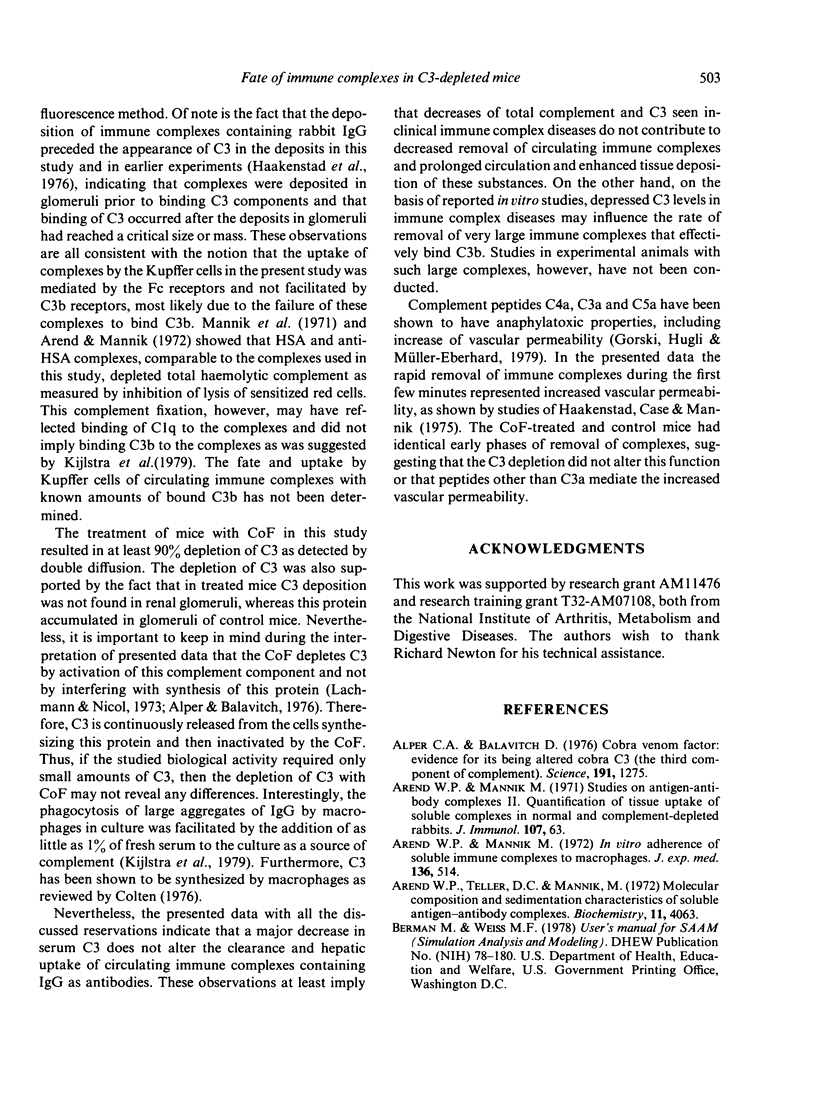
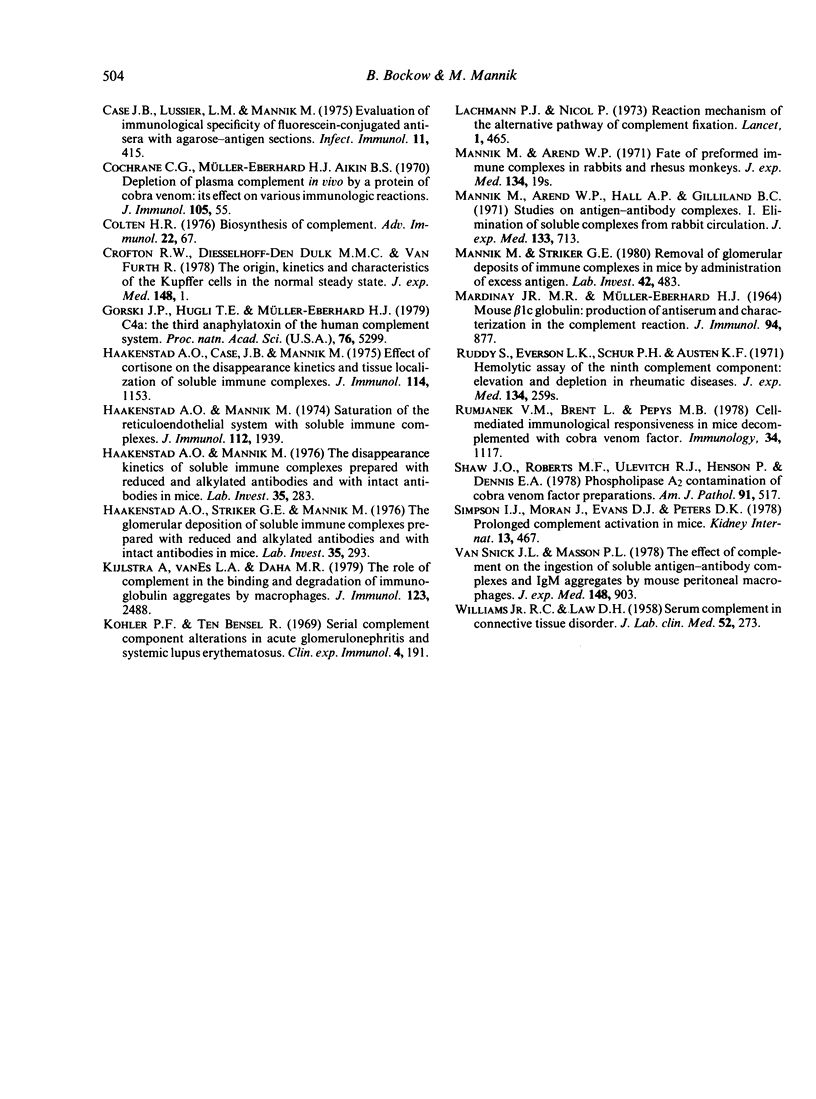
Images in this article
Selected References
These references are in PubMed. This may not be the complete list of references from this article.
- Alper C. A., Balavitch D. Cobra venom factor: evidence for its being altered cobra C3 (the third component of complement). Science. 1976 Mar 26;191(4233):1275–1276. doi: 10.1126/science.56780. [DOI] [PubMed] [Google Scholar]
- Arend W. P., Mannik M. In vitro adherence of soluble immune complexes to macrophages. J Exp Med. 1972 Sep 1;136(3):514–531. doi: 10.1084/jem.136.3.514. [DOI] [PMC free article] [PubMed] [Google Scholar]
- Arend W. P., Mannik M. Studies on antigen-antibody complexes. II. Quantification of tissue uptake of soluble complexes in normal and complement-depleted rabbits. J Immunol. 1971 Jul;107(1):63–75. [PubMed] [Google Scholar]
- Arend W. P., Teller D. C., Mannik M. Molecular composition and sedimentation characteristics of soluble antigen-antibody complexes. Biochemistry. 1972 Oct 24;11(22):4063–4072. doi: 10.1021/bi00772a008. [DOI] [PubMed] [Google Scholar]
- Case J. B., Lussier L. M., Mannik M. Evaluation of immunological specificity of flurescein-conjugated antisera with agarose-antigen sections. Infect Immun. 1975 Feb;11(2):415–416. doi: 10.1128/iai.11.2.415-416.1975. [DOI] [PMC free article] [PubMed] [Google Scholar]
- Cochrane C. G., Müller-Eberhard H. J., Aikin B. S. Depletion of plasma complement in vivo by a protein of cobra venom: its effect on various immunologic reactions. J Immunol. 1970 Jul;105(1):55–69. [PubMed] [Google Scholar]
- Colten H. R. Biosynthesis of complement. Adv Immunol. 1976;22:67–118. doi: 10.1016/s0065-2776(08)60548-9. [DOI] [PubMed] [Google Scholar]
- Crofton R. W., Diesselhoff-den Dulk M. M., van Furth R. The origin, kinetics, and characteristics of the Kupffer cells in the normal steady state. J Exp Med. 1978 Jul 1;148(1):1–17. doi: 10.1084/jem.148.1.1. [DOI] [PMC free article] [PubMed] [Google Scholar]
- Gorski J. P., Hugli T. E., Müller-Eberhard H. J. C4a: the third anaphylatoxin of the human complement system. Proc Natl Acad Sci U S A. 1979 Oct;76(10):5299–5302. doi: 10.1073/pnas.76.10.5299. [DOI] [PMC free article] [PubMed] [Google Scholar]
- Haakenstad A. O., Case J. B., Mannik M. Effect of cortisone on the disappearance kinetics and tissue localization of soluble immune complexes. J Immunol. 1975 Apr;114(4):1153–1160. [PubMed] [Google Scholar]
- Haakenstad A. O., Mannik M. Saturation of the reticuloendothelial system with soluble immune complexes. J Immunol. 1974 May;112(5):1939–1948. [PubMed] [Google Scholar]
- Haakenstad A. O., Mannik M. The disappearance kinetics of soluble immune complexes prepared with reduced and alkylated antibodies and with intact antibodies in mice. Lab Invest. 1976 Sep;35(3):283–292. [PubMed] [Google Scholar]
- Haakenstad A. O., Striker G. E., Mannik M. The glomerular deposition of soluble immune complexes prepared with reduced and alkylated antibodies and with intact antibodies in mice. Lab Invest. 1976 Sep;35(3):293–301. [PubMed] [Google Scholar]
- Kijlstra A., van Es L. A., Daha M. R. The role of complement in the binding and degradation of immunoglobulin aggregates by macrophages. J Immunol. 1979 Dec;123(6):2488–2493. [PubMed] [Google Scholar]
- Lachmann P. J., Nicol P. Reaction mechanism of the alternative pathway of complement fixation. Lancet. 1973 Mar 3;1(7801):465–467. doi: 10.1016/s0140-6736(73)91886-2. [DOI] [PubMed] [Google Scholar]
- MARDINEY M. R., Jr, MUELLER-EBERHARD H. J. MOUSE BETA-1C-GLOBULIN: PRODUCTION OF ANTISERUM AND CHARACTERIZATION IN THE COMPLEMENT REACTION. J Immunol. 1965 Jun;94:877–882. [PubMed] [Google Scholar]
- Mannik M., Arend M. P., Hall A. P., Gilliland B. C. Studies on antigen-antibody complexes. I. Elimination of soluble complexes from rabbit circulation. J Exp Med. 1971 Apr 1;133(4):713–739. doi: 10.1084/jem.133.4.713. [DOI] [PMC free article] [PubMed] [Google Scholar]
- Mannik M., Striker G. E. Removal of glomerular deposits of immune complexes in mice by administration of excess antigen. Lab Invest. 1980 May;42(5):483–489. [PubMed] [Google Scholar]
- Rumjanek V. M., Brent L., Pepys M. B. Cell-mediated immunological responsiveness in mice decomplemented with cobra venom factor. Immunology. 1978 Jun;34(6):1117–1123. [PMC free article] [PubMed] [Google Scholar]
- Shaw J. O., Roberts M. F., Ulevitch R. J., Henson P., Dennis E. A. Phospholipase A2 contamination of cobra venom factor preparations. Biologic role in complement-dependent in vivo reactions and inactivation with p-bromophenacyl bromide. Am J Pathol. 1978 Jun;91(3):517–530. [PMC free article] [PubMed] [Google Scholar]
- Simpson I. J., Moran J., Evans D. J., Peters D. K. Prolonged complement activation in mice. Kidney Int. 1978 Jun;13(6):467–471. doi: 10.1038/ki.1978.69. [DOI] [PubMed] [Google Scholar]
- WILLIAMS R. C., Jr, LAW D. H., 4th Serum complement in connective tissue disorders. J Lab Clin Med. 1958 Aug;52(2):273–281. [PubMed] [Google Scholar]
- van Snick J. L., Masson P. L. The effect of complement on the ingestion of soluble antigen-antibody complexes and IgM aggregates by mouse peritoneal macrophages. J Exp Med. 1978 Oct 1;148(4):903–914. doi: 10.1084/jem.148.4.903. [DOI] [PMC free article] [PubMed] [Google Scholar]




